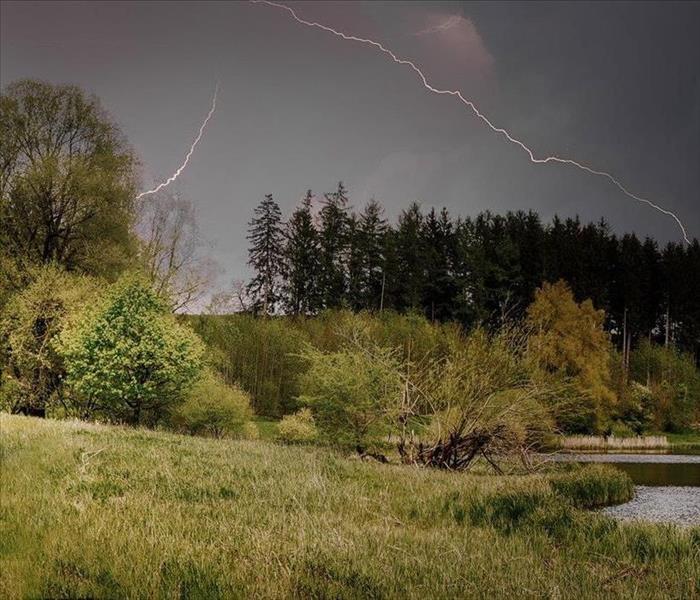Lightning Safety Tips For Upstate South Carolina
6/28/2021 (Permalink)
 You should always avoid being outside during a lightning storm. Check the weather first and decide if you need to change your plans for the day.
You should always avoid being outside during a lightning storm. Check the weather first and decide if you need to change your plans for the day.
Lightning Safety Tips For Upstate South Carolina.
It's officially summertime! For upstate South Carolinians, that means more time outdoors. Hiking, camping, boating, fishing, and swimming are just a few summer activities that residents enjoy during the warmer months. Unfortunately, warmer weather means pop-up thunderstorms. The potential for a lightning strike is something that you should always take seriously.
You should always avoid being outside during a lightning storm. Check the weather first and decide if you need to change your plans for the day. Head back inside early if you see dark clouds forming and hear thunder in the distance. If you do find yourself in a storm, reducing and managing the risk of getting struck by lightning is possible through sensible lightning safety procedures. Below are a few tips you can use if you find yourself suddenly caught in a lightning storm.
Mountains
Tall mountain peaks, ridges, and above treeline terrain are high-risk areas for attracting a return current or a lightning strike. In the summer months especially, in the Upstate of South Carolina, pop-up afternoon thunderstorms create the perfect recipe for dangerous lightning conditions. Typically, these storms arrive in the afternoon, but it is not uncommon for them to begin earlier. If you're out hiking and hear thunder above the treeline, turn around immediately and get back to the shelter of the treeline. Never hide in the entrance of a cave.
If you see sparks on metal objects or your hair begins to stand up, this is called a corona- which means that your body is signaling towards an imminent strike. If this happens, drop everything metal and assume the lightning position as quickly as possible.
If you are camping, remember you should never pitch tents above the treeline. If you cannot avoid an exposed campsite, then you must get out of the tent and move at least 50 meters away in the event of a storm. Wait in the lightning position until the storm has passed.
Rolling Hills and Gentle Terrain
It is rare that lightning strikes in this terrain. Run for shelter if you hear thunder, but if you see the storm striking nearby, get in the lightning position.
Fields
If you are out in an open field during a lightning storm, move more than 50 meters away from fences and irrigation pipes, these are conductors and attract lightning. Do not seek shelter under trees or by telephone poles if they are too close to a fence or irrigation pipes.
Forests
It is extremely dangerous to take shelter under a lone tall tree during a lightning storm. However, uniform canopy forests are much less at risk of attracting lightning. Avoid trunks of large trees, but it is better to be under that type of shelter instead of out in the open.
Water
Swimming in a pool or boating on flat water such as lakes, wide rivers, or the ocean leaves one exposed to lightning strikes. Plan aquatic activities around the weather, and if you hear thunder in the distance or see dark clouds, get to shore as quickly as possible.



 24/7 Emergency Service
24/7 Emergency Service